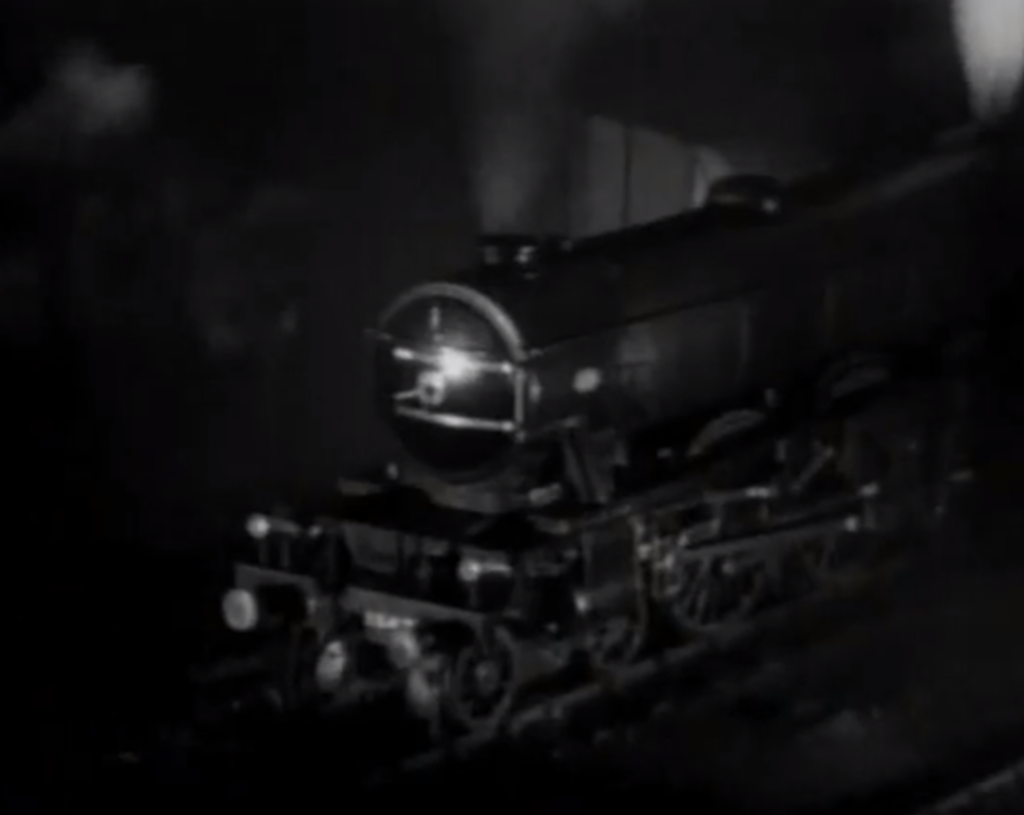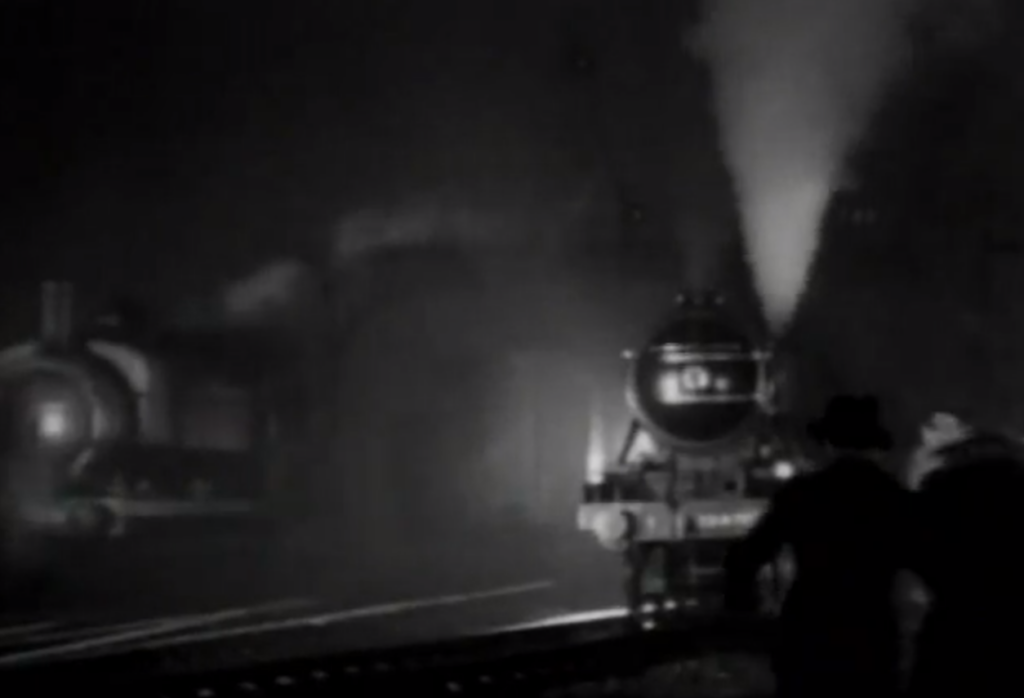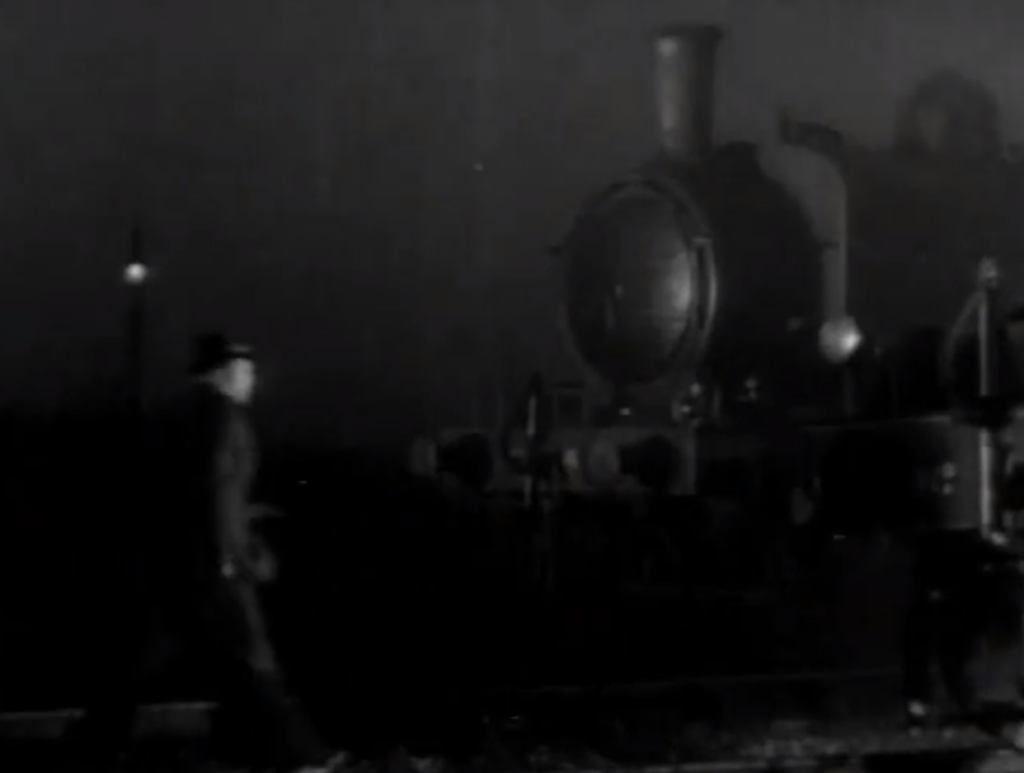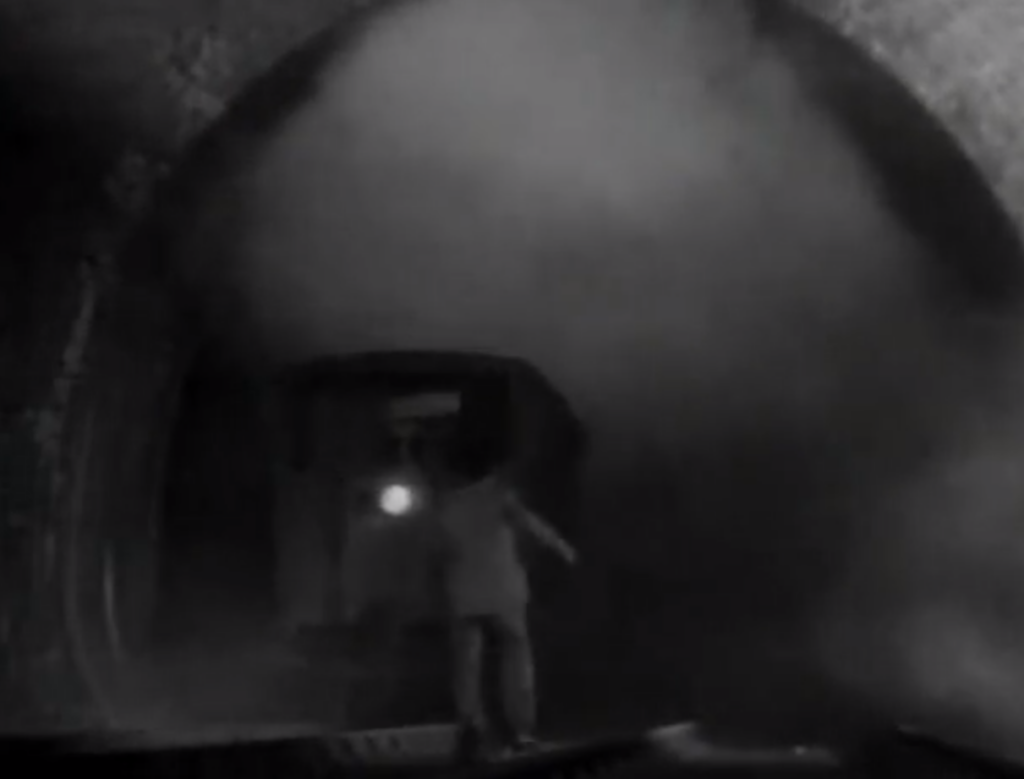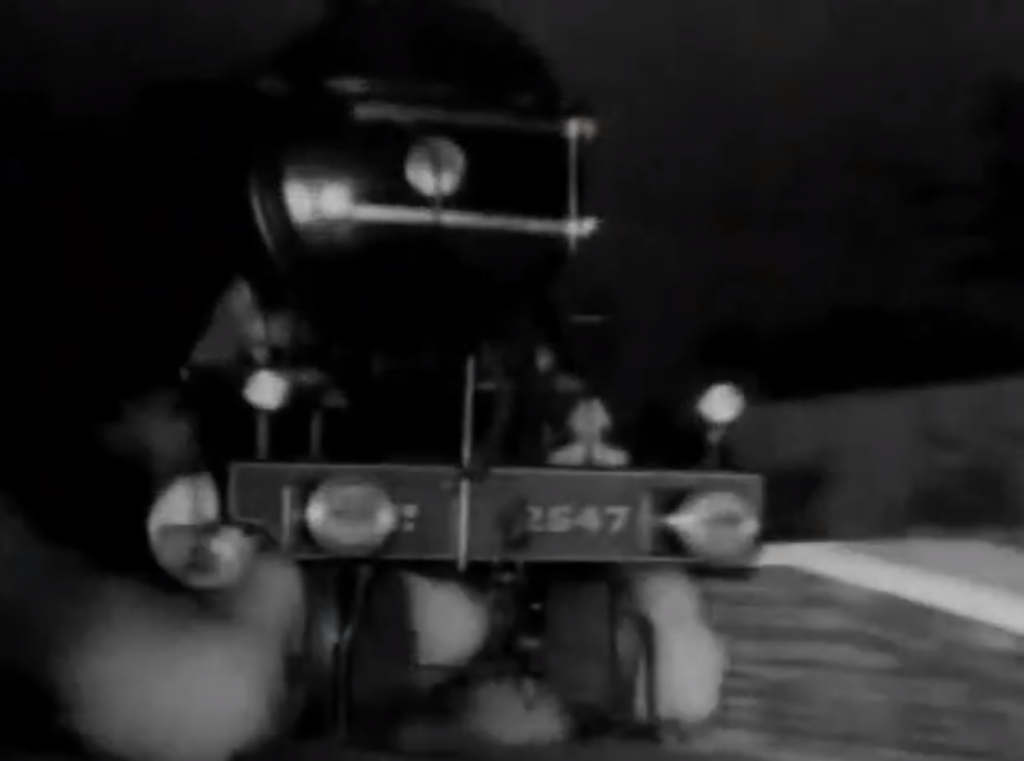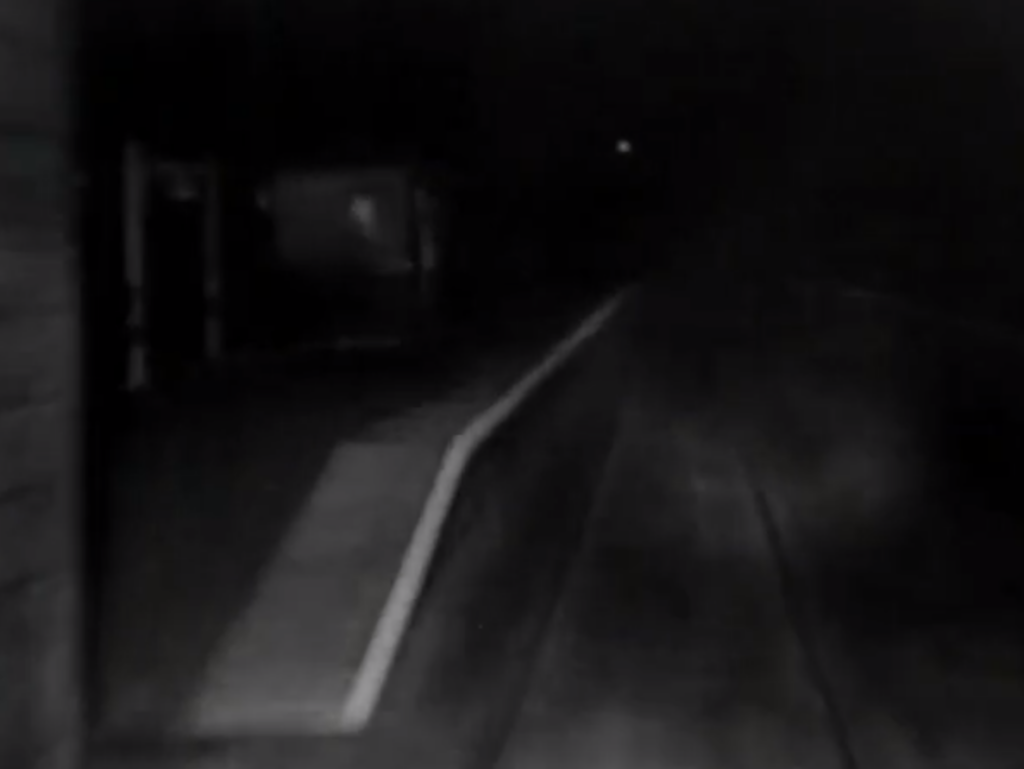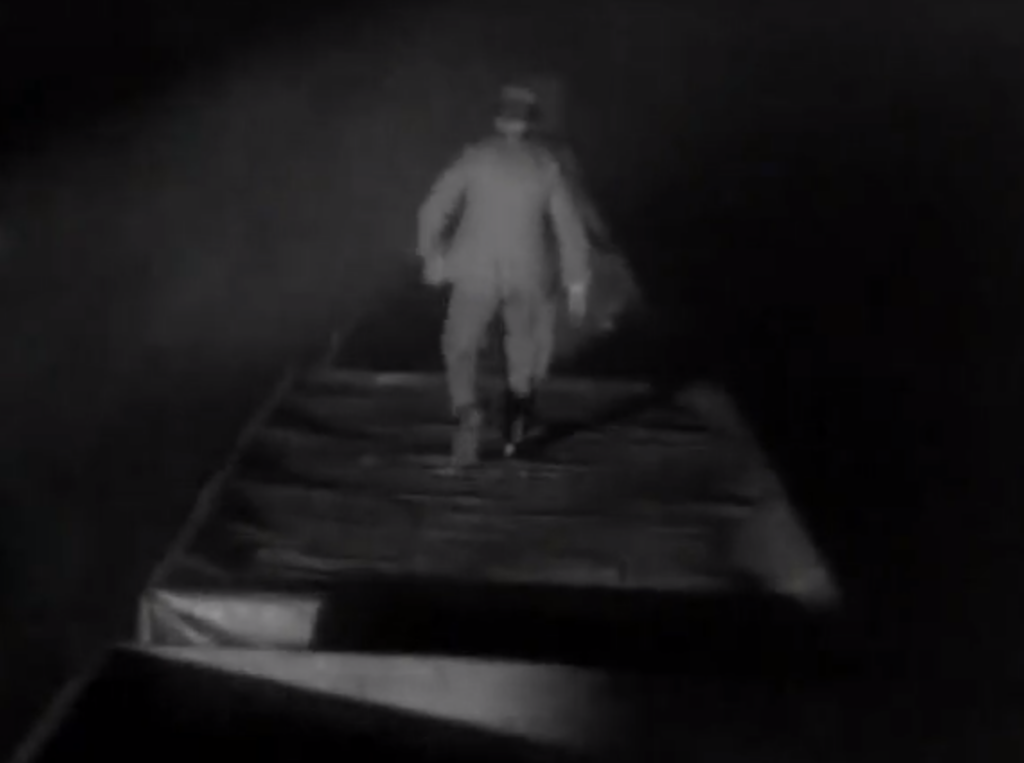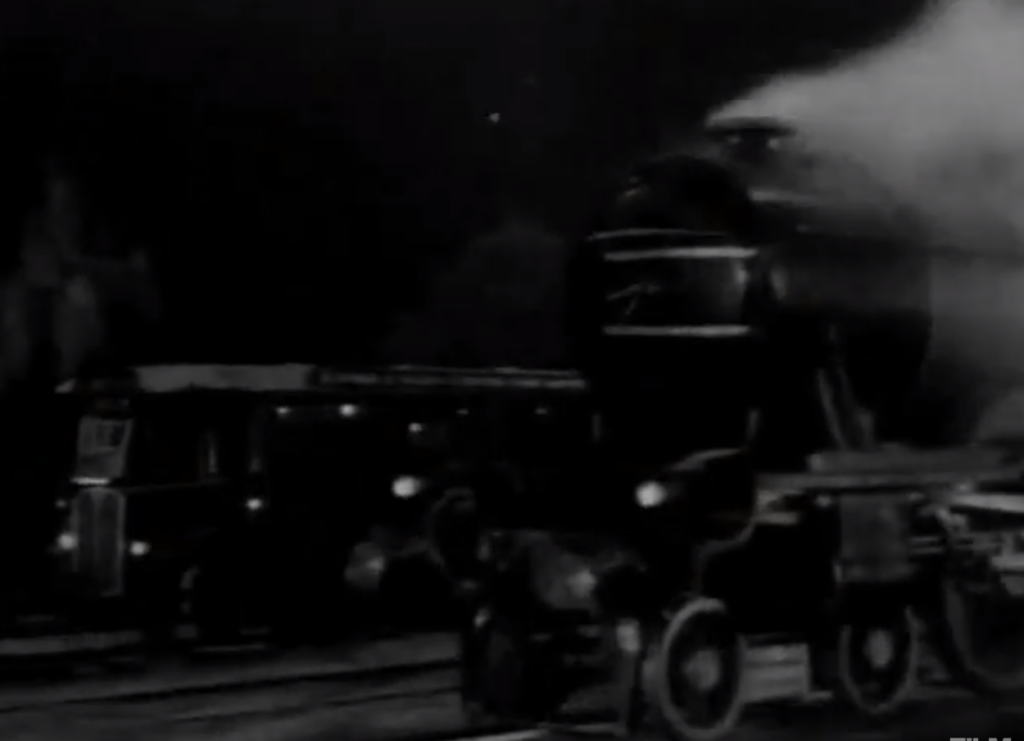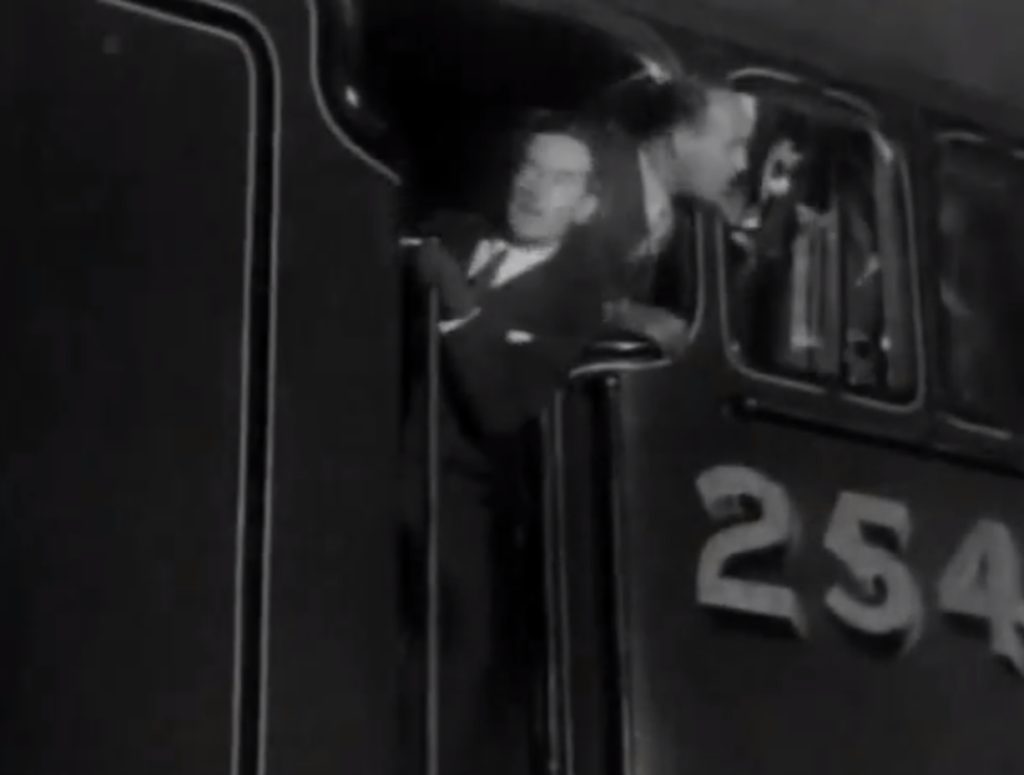
GB
1932
1hr 04mins
Dir: Alfred Hitchcock
Starring: John Stuart and Anne Grey
A gang of thieves gather at a safe house after a jewel robbery, but a detective is on their trail
This early Hitchcock thriller is based on a stage play by J. Jefferson Farjeon and although it starts rather slowly it builds up to an excellent railway chase sequence in the latter half that ends with a spectacular crash. In the story, the gang have hidden their jewels in an old house that stands over a railway leading to the English Channel, the film’s title being derived from the house’s street number. The thieves board a night ferry goods train bound for Harwich with the intention of getting across to the Continent. The initial scenes feature some good floodlit shots of King’s Cross Goods Yard close to Copenhagen Tunnels, with LNER Class A1 4-6-2 No.2547 Doncaster on a freight and an LNER J52 Class 0-6-0ST also visible. No. 2547 becomes the train loco for most of the chase sequence with John Stuart in hot pursuit on a Greenline bus which is keeping pace! This was filmed at night on the Hertford Loop line with plenty of action involving actors jumping from wagon to wagon, filmed from an adjacent train fitted with great banks of arc lights to help illuminate the entire scene. Eventually the crooks get to the cab of the A1, disable the crew, and takeover the train in order to gain time. This ends up in disaster as they don’t know how to drive it and they end up crashing into the train ferry. As the train hits the ferry it smashes into wagons already aboard, causing them to be flung in all directions which results in the ferry breaking its moorings and beginning to sink, dropping some more wagons into the sea. This sequence involved building a massive O-gauge model of the train, ferry and terminal at the Shepherds Bush studios, and using Bassett-Lowke and Bond equipment. The result of all this was one of the most effective and quite brilliant crash scenes of its time. Although it is now obviously quite basic and outdated it does in no way detract from the excitement of the last twenty minutes of this sadly neglected film. After being available only in poor-quality prints for decades, the film was released in high quality DVD format in 2005. Though the opening credits confirm the picture’s title is Number Seventeen, much of the promotional material refers to it as Number 17.
